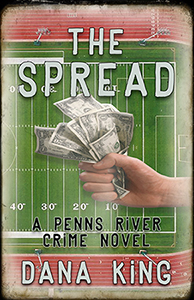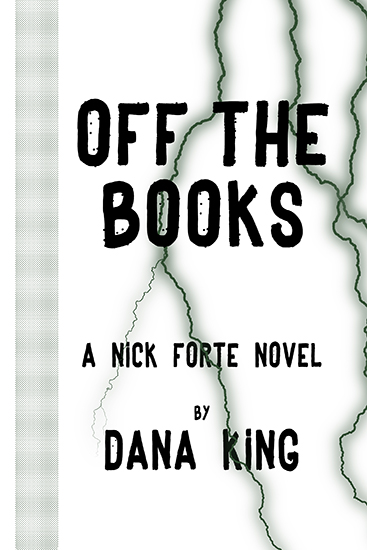That’s right, my Top Ten list. You don’t like it, make your own.
Top Ten lists are the two-inch erections of writing. (A man and a woman go to bed together. She
sees his erection measures two inches, at best, and asks, “Who do you expect to
satisfy with that?” “Me,” he replies.) Everyone has their own tastes and
criteria. Watching the Godfather trilogy a few weeks ago got me to
thinking about my personal Pantheon of crime films. Take it for what it’s
worth.
I have two primary principles when evaluating films for my
list:
1. I have to like the movie.
2. It has to bear up under repeated viewings.
This means pictures such as A Touch of Evil don’t
make the cut, no matter how much Chili Palmer likes it. I can appreciate the
art, but a movie that casts Charlton Heston as a Mexican and leaves Janet Leigh
to sit alone in a motel room for most of its duration is not something I’m
going to watch a lot. Or even again.
Pulp Fiction is also right out. I’ve seen it many
times and will probably see it again, but my opinion changes with every viewing.
Is it brilliant? Is it a series of brilliant scenes that don’t quite equal the
sum of their parts? Is it indecipherable, self-indulgent twaddle? Is it all of
the above? Every time I watch it, I come down on the side of a different
answer.
What does make the cut? These are all movies I’ll watch
again—most of which I own—and look forward to doing so, knowing I’ll find
something to enjoy I missed before. I made no effort to rank them; they are
displayed in chronological order of their release.
The Maltese Falcon (1940)
The quintessential black and white noir film, in my mind
rivaled only by Sunset Boulevard. (Which did not make the list because I
don’t consider it a crime movie, though there is a crime committed.) The complex
plot is not too complex to follow, and all the ends are tied off without being
too pat about it. Bogart looks nothing like how Spade is described in the book,
but he’s still perfect in the part. My only quibble was with Mary Astor as the
femme fatale, but a little research taught me she had a reputation as a
Hollywood bad girl at the time, which made her more believable to audiences of
the day.
The French Connection (1971)
Including this one saved me a beating from Reed Farrel
Coleman, but it would have made the cut, anyway. Gene Hackman and Roy Scheider
made their bones here; Hackman already had a name for himself, but Popeye Doyle
blew him up. Don’t pay too much attention to the story; this is the ultimate
mood picture, with one of the great (underrated) soundtracks ever. The chase
sequence still grips me, though I have come to wonder how many cars that subway
train had.
The Godfather (1972)
I talked about this one last
week.
The Friends of Eddie Coyle (1973)
Wonderful and faithful adaptation of George V. Higgins’s
groundbreaking novel. My favorite Robert Mitchum performance, though Peter
Boyle, Richard Jordan, and Steven Keats were all worthy of award consideration.
The movie that, as much as any, shaped my ideas about criminal life.*
Chinatown (June 1974)
My go-to film when anyone complains about the water
situation in Southern California. It’s a desert. People weren’t meant to
live there. Just about a perfect noir.
The Godfather Part 2 (December 1974)
I talked about this one last
week, too.
The Usual Suspects (1995)
It’s hard to imagine anyone who reads this blog isn’t
familiar with The Usual Suspects, but I’ll not say much just in case,
lest I spoil the greatest reveal in crime film history. Kevin Spacey steals the
show, but all of the supporting actors are outstanding. Fun fact: Chazz
Palmentieri played federal agent Dave Kujan (pronounced koo-yawn.); “Cujon” (very
close in pronunciation) is a Cajun word for “fool.”
LA Confidential (1997)
Here it is, Mike Dennis. I wrote a
blog about this one over ten years ago that probably needs some updating
now that I’ve read the book. The only thing close to a flaw I can find is the
display of Susan Lefferts’s body in the identification scene. She was killed by
shotgun but doesn’t have a mark on her. Think how good a film must be for that
to be my major quibble.
The Drop (2014)
A clinic in how to get in and get out of a story as
economically as possible while still providing maximum impact for the audience.
Tom Hardy is at his chameleon best, and James Gandolfini, Noomi Rapace, and
Mattias Schoenaerts hang right with him. The final reveal here is first rate.
Hell or High Water (2016)
Taylor Sheridan’s masterpiece to date. Not that his other
work isn’t good, but Hell or High Water shows both the criminal and law
enforcement side with equal depth and understanding. The final scene between
Jeff Bridges and Chris Pine, each understanding the other better than the other
thinks, worthy adversaries to the end, ties off a movie as well as any I’ve
seen.
* -- This is why Heat, Goodfellas, and Casino
didn’t make the list. They’re all brilliant films worthy of repeated viewings,
but they’re too flashy.
I expect this list to satisfy no one other than myself. Bring
it on.



